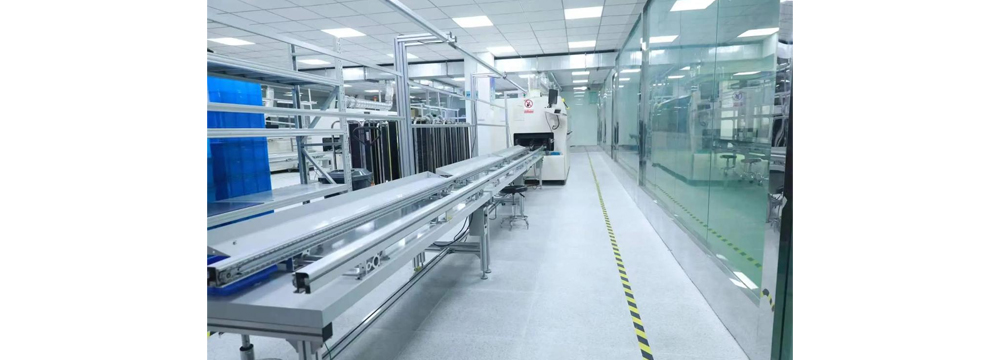A stabilized voltage supply is an electronic device that provides a stable alternating current (AC) or direct current (DC) to a load. It includes two main categories: AC stabilized power supplies and DC stabilized power supplies.
When the mains voltage or load experiences momentary fluctuations, the stabilized power supply compensates for the voltage amplitude with a response time of 10-30ms, stabilizing it within ±2%.
Working Principle: The mains frequency AC power supply is stepped down by a transformer, rectified, and filtered to become a stable DC power supply. The remaining parts in the diagram are the control components that regulate the voltage and achieve stability. After the power supply is connected to the load, the output voltage is obtained through a sampling circuit and compared with a reference voltage.
In fields such as industrial automation, new energy testing, and precision manufacturing, high-power AC stabilized power supplies are one of the core devices ensuring stable equipment operation. The following section comprehensively examines its advantages and disadvantages from the perspectives of technical characteristics, applications, and limitations.

I. Technical Advantages
1. High Precision and Dynamic Response
The high-power AC regulated power supply utilizes high-frequency switching technology combined with DSP digital control, achieving a voltage fluctuation range of ≤±0.1% FS (full scale) and current ripple as low as 0.3% FS, significantly superior to traditional thyristor power supplies. For example, in 1000V high-voltage scenarios, its dynamic response speed can reach millisecond levels, effectively avoiding waveform distortion caused by voltage rise oscillations or load surges, making it suitable for testing sensitive equipment such as energy storage converters and ultra-high-voltage motors.
2. Modular Design and Flexible Expansion
Through a modular architecture, Geely power supplies support parallel operation of multiple units (up to 200 units), covering power from 600W to 2000KW. Users can flexibly adjust output parameters according to their needs (e.g., voltage 0-1000V, current 0-2000A). Furthermore, it has built-in RS232, RS485, GPIB, and other communication interfaces, compatible with the MODBUS-RTU protocol, facilitating integration into automated testing systems.
3. High Efficiency, Energy Saving, and Safety Protection
Utilizing PWM (Pulse Width Modulation) technology, the power conversion efficiency reaches up to 93%, saving over 15% energy compared to traditional power supplies. In terms of safety, the equipment integrates overvoltage (OVP), overcurrent (OCP), short circuit, and overheat protection mechanisms. Input and output are completely isolated, and it has passed a 1500VAC/1 minute withstand voltage test to ensure stable operation under harsh conditions.
4. Multi-Scenario Adaptability and Customized Functions
The high-power AC regulated power supply supports automatic switching between constant voltage (CV), constant current (CC), and constant power (CP) modes. It can also preset 100 sets of parameters via a host computer to meet the needs of complex testing processes. In the new energy field, it can simulate charge and discharge curves to verify battery life.

II. Application Scenarios
1. Industrial Testing and Scientific Research Experiments
The high-power AC regulated power supply is widely used in high-voltage testing scenarios such as photovoltaic inverters, energy storage systems, and 5G base stations. For example, its AS2000 series supports the storage of 100 sets of parameters, allowing for quick recall of preset conditions and shortening the R&D cycle.
2. Precision Manufacturing and Environmentally Friendly Production
In processes such as electroplating and metallurgy, the equipment improves surface treatment uniformity through low ripple output (≤1%), while employing a forced air-cooling design (IP30 protection rating) to adapt to high-temperature and high-humidity environments.
III. Disadvantages
1. Higher Initial Investment Costs
High-power models (e.g., 600KW and above) are generally more expensive than general power supplies due to the use of high-density alloy resistors and precision temperature control systems.
2. Heat Dissipation and Noise Challenges
Despite the forced air-cooling design, fan noise can reach 65dB (at a distance of 1 meter) under full load, requiring sound insulation measures during installation. Furthermore, prolonged exposure to high temperatures (e.g., above 40℃) may affect component lifespan, necessitating customized heat dissipation solutions.
3. Operational Complexity
Advanced functions (e.g., multi-machine parallel operation, programmable protocol configuration) require professional training, which may present a technical hurdle for small and medium-sized enterprises.
So, what brands are recommended?
Flextronics: An international company headquartered in Sweden, possessing strong manufacturing and R&D capabilities in DC-DC converters, with products widely used across various fields.
Lingyi: A long-established company founded in the 1970s, it has undergone acquisitions and other corporate evolution, boasting 50 years of power supply manufacturing history.
Delta: Primarily focused on industrial automation, data centers, renewable energy, and communication power supplies.
Siemens: A large international company. Its products are mainly used in industrial automation, drive systems, and process industries.
Huawei: A large, well-known company with leading technology.
IDEALPLUSING: A leading global provider of power management and thermal solutions, with an extremely broad product line. As one of the leading domestic power supply technology brands, IDEALPLUSING has gained favor with many customers due to its customization advantages, offering a high cost-performance ratio compared to imported brands.
IDEALPLUSING high-power AC regulated power supplies, with their high precision, modularity, and intelligent features, have become the preferred solution to replace imported brands, especially suitable for industrial and scientific research scenarios with stringent stability requirements.
Share our interesting knowledge and stories on social media













